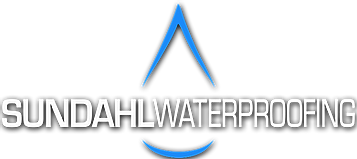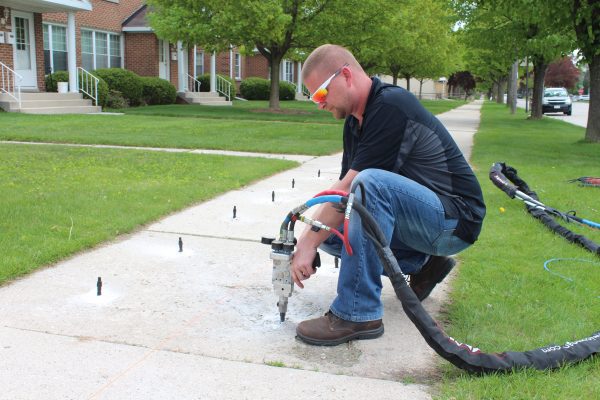FAST, CLEAN, & READY TO USE IMMEDIATELY! Need we say more?
Uneven, sunken concrete slabs can present safety issues, damage vehicle tires, and look unappealing. We have been helping homeowners throughout New York avoid the expensive option of concrete replacement by raising and leveling their concrete instead. You can resume normal use of your surface within minutes of leveling, and depending on the size and accessibility of the work, most projects take no longer than an hour from start to finish.

In New York especially, it’s no secret that cold, wet winters can wreak havoc on your concrete. With the ongoing expansion and contraction caused by the changing weather, the ground below your driveway, sidewalks, and surrounding your foundation will—over time—begin to shift. If you have a concrete slab in your driveway, sidewalk or basement which is uneven, or even cracking, replacement of that slab is not your only option.
What types of problems can concrete raising fix?
Sidewalks
Driveways
Pool Decks
Steps
Patios
Garage floors
Basement floors
Office floors
Warehouse floors
Highways
Bridge Approaches
Concrete raising is a fantastic alternative to replacing your concrete, often times saving you over 50% of the cost of replacement!
Concrete raising, often referred to as slabjacking or concrete leveling, is a fantastic alternative to repairing or replacing concrete slabs. There are two different methods for raising sunken concrete: mudjacking (sometimes referred to as slab jacking) or polyurethane foam concrete raising.
The process for raising concrete, whether by mudjacking or by polyurethane concrete raising, is very similar—differing mainly by material pumped. Simply put, holes are drilled into the concrete slab, mud material or polyurethane foam is pumped under the slab, and the voids under the concrete slab(s) are filled, thereby raising the slab. Finally, the drill holes are patched with a concrete mixture to complete the process.
Raising concrete tends to be half the cost of replacing the concrete.
Here at Sundahl Waterproofing, we know what’s important for raising concrete the right way.
What causes concrete to settle?
There are many things that can cause concrete to settle, all of which do not always require concrete replacement to fix.
Poor or improper compaction of the base before concrete was poured: The weight of the slab will further compact the base after curing, and settlement can happen quickly.
Climate: The Polar Vortex experienced last year by many in the northern hemisphere wreaks havoc on concrete slabs. Freezing and thawing causes slabs to expand when frost is in the ground. Frost causes concrete to heave or raise. When the ground thaws, the concrete will settle again, but many times not to where it was originally. This results in trip spots between shifting slabs. On the opposite end of the climate spectrum, heat and drought can cause expansive clay soils to shrink, causing concrete slabs to settle. When those clay soils receive much needed rain and expand, the concrete slabs become unlevel.
Erosion: Damaged water or sewer lines, improperly placed downspouts, excessive rain can all lead to washout of base materials under concrete causing slabs to settle.
Machine/Traffic Vibrations: Concrete slabs may move or settle in industrial or highway settings where there is frequent movement and heavy loads being transported. The vibrations from machinery and passing traffic can lead to the base compacting and slabs settling or moving. Case study
Slab Curl/Rocking Slabs: Slab curl occurs when a relatively large section of concrete is poured. During the curing process, the top slab may cure slightly faster causing the slab to curl, rock, and become unstable. Vibration can also cause slabs to settle.

